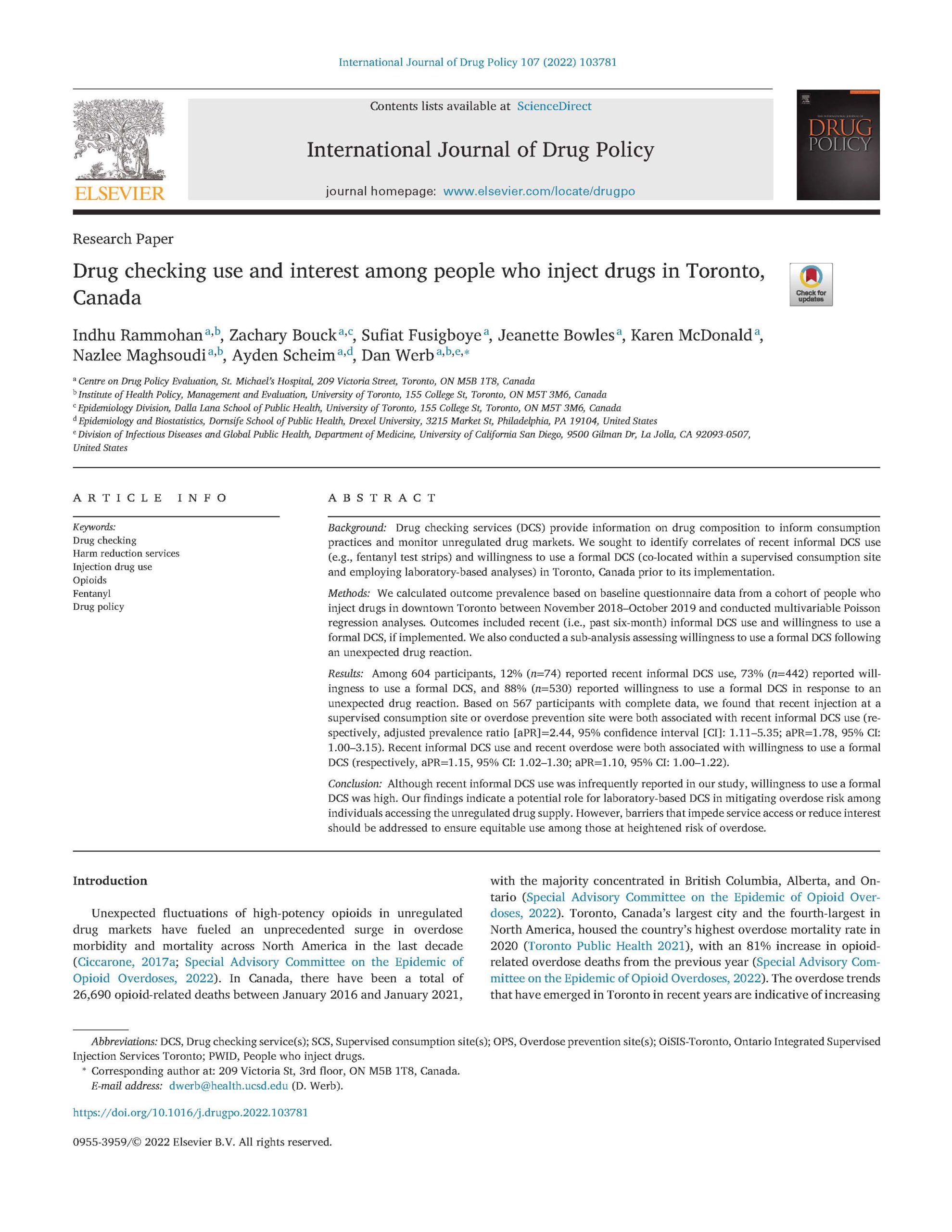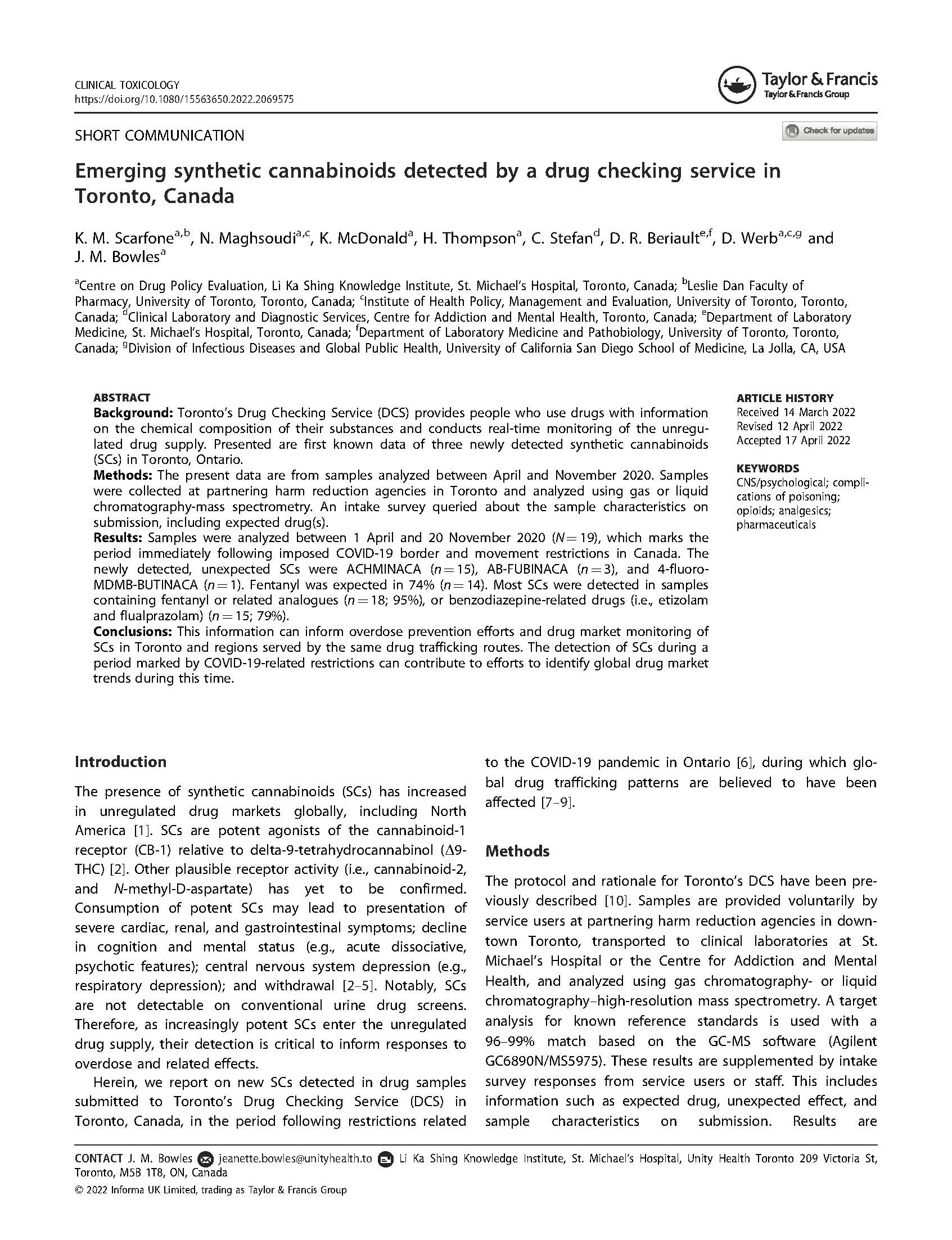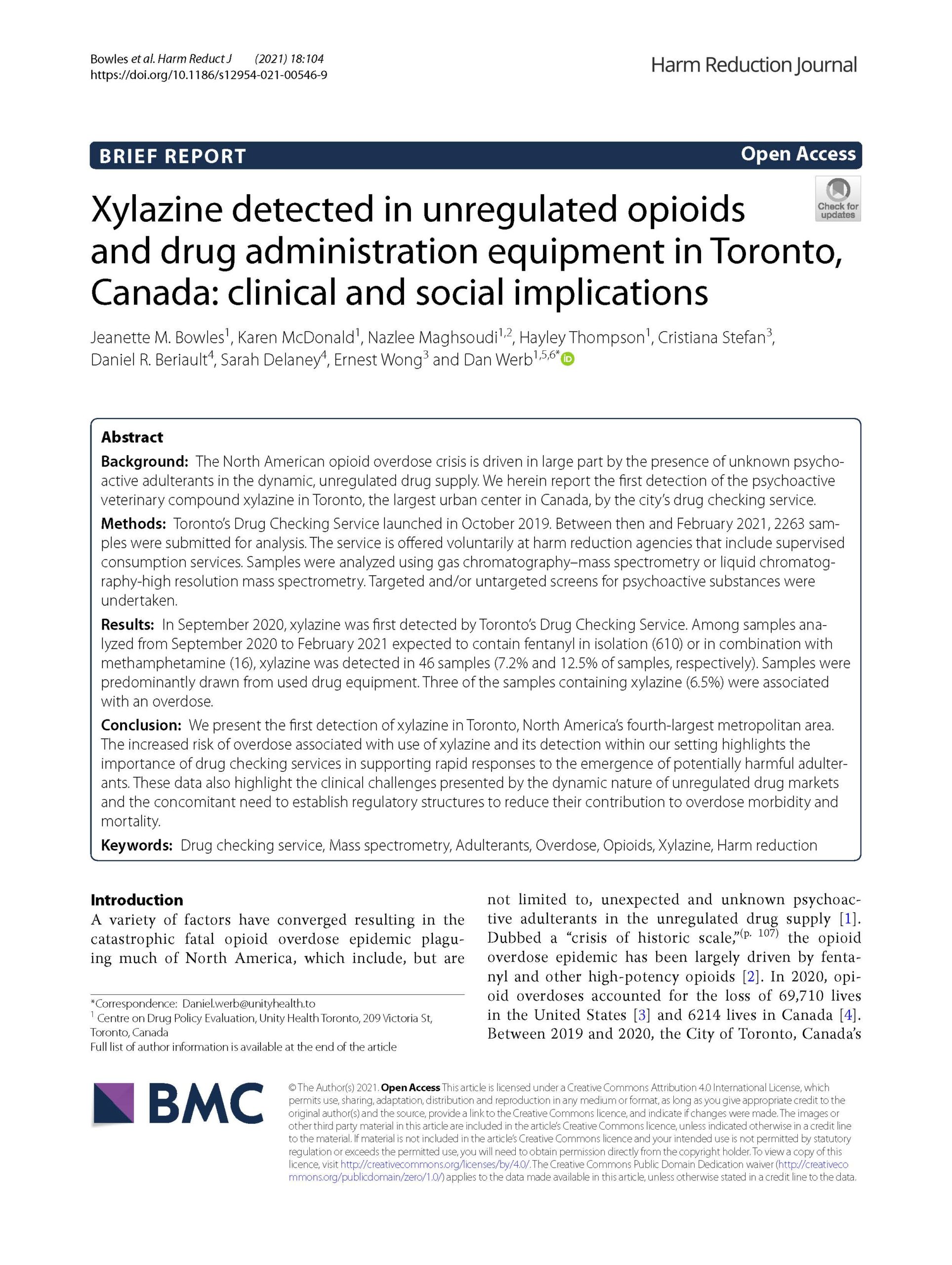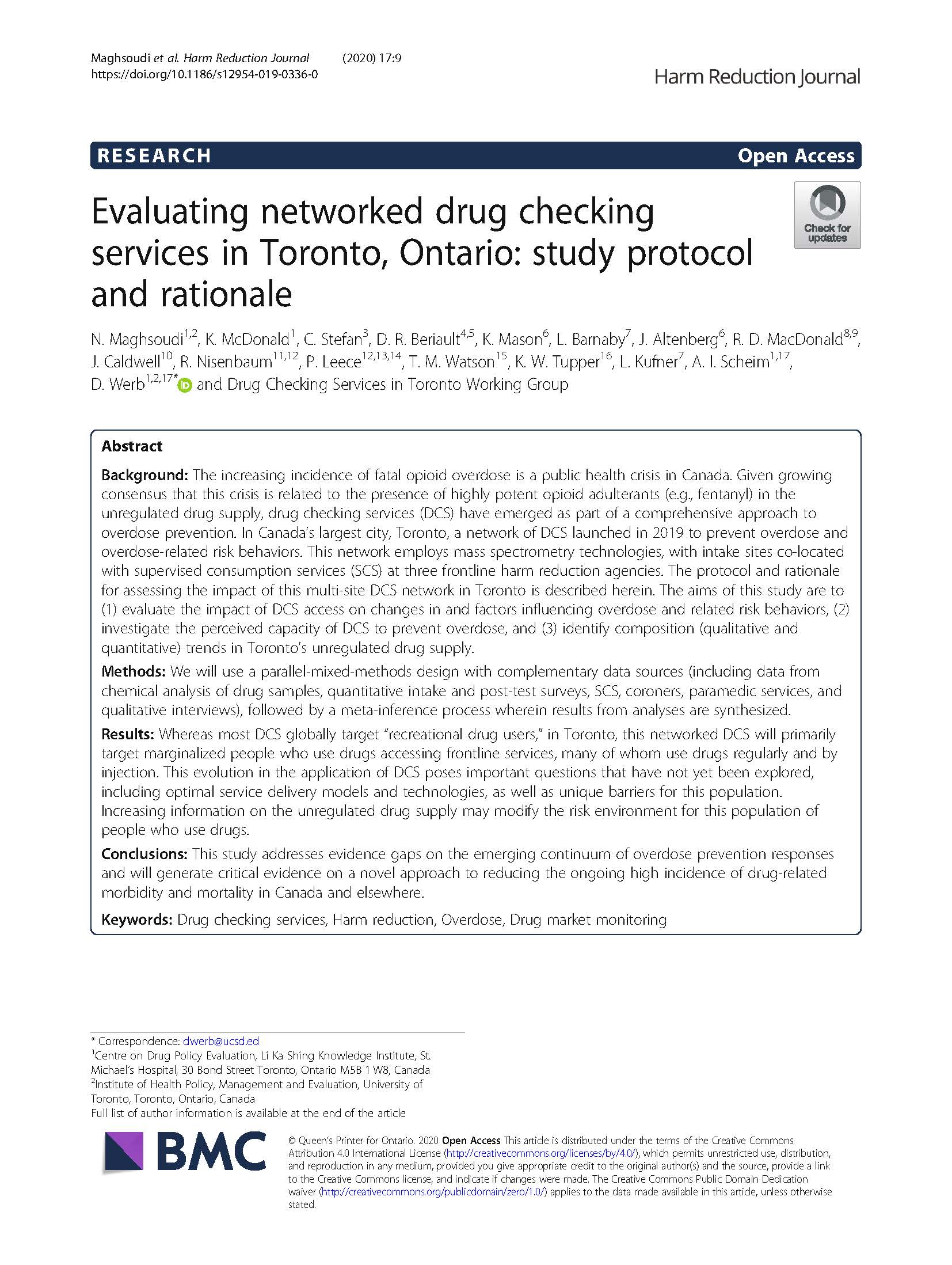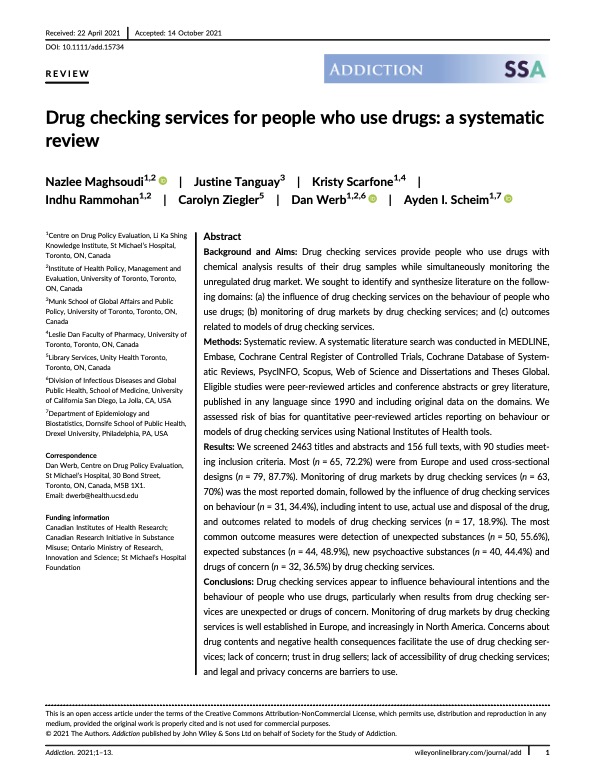Detection of synthetic cannabinoid adulteration in the unregulated drug supply in three Canadian settings
Abstract
Background: Novel psychoactive substances (NPS) are increasingly being consumed worldwide, with synthetic cannabinoids and synthetic opioids being the second and third most commonly used NPS, respectively. Certain synthetic cannabinoids can produce significant harms, particularly when used with opioids. The objective of this study was to characterise the presence of synthetic cannabinoids in the unregulated drug supply in three Canadian settings
Methods: In the British Columbia setting, all samples were first analysed at point‐of‐care using combination Fourier‐transform infrared (FTIR) spectroscopy and fentanyl immunoassay strips prior to confirmatory testing using quantitative nuclear magnetic resonance spectroscopy, gas chromatography/mass spectrometry (GC/MS) and/or liquid chromatography/mass spectrometry (LC/MS). In the Toronto, Ontario setting, the samples were analysed directly by GC/MS, LC/MS liquid chromatography‐high resolution/mass spectrometry.
Results: Between January 2018 and December 2019, 38 (2.8%) synthetic cannabinoid samples were detected in the unregulated drug supply (25/909 in British Columbia and 13/440 in Ontario). In British Columbia and Ontario, 76% and 85% of samples, respectively, were expected by individuals to be an opioid. Synthetic cannabinoids detected included AMB‐FUBINACA, AB‐FUBINACA, 5‐fluoro‐MDMB‐PINACA, and 5‐fluoro‐MDMB‐PICA, and largely co‐occurred with fentanyl. In the British Columbia context, Fourier‐transform infrared spectroscopy failed to detect synthetic cannabinoid compounds in almost half (48%) of the samples at point‐of‐care.
Conclusion: As point‐of‐care technologies failed to detect these compounds in many occasions, our findings demonstrate the importance of laboratory confirmatory analysis to identify NPS. Given the high risk of harm associated with the consumption of synthetic cannabinoids, further research should investigate the reasons for adulteration.
View full article here.


